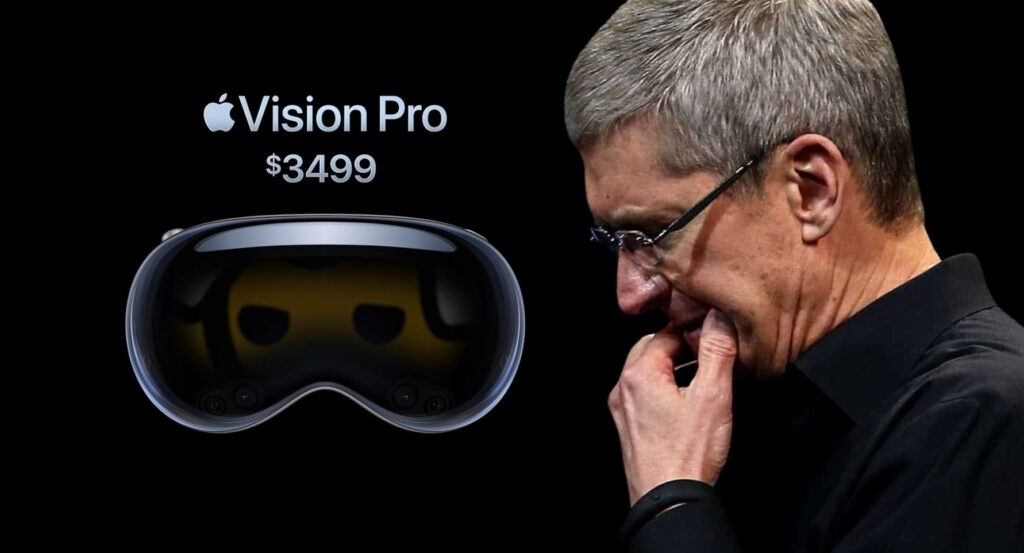In a surprising move, Apple is reportedly scaling back production of its $3,500 Vision Pro headset, quietly retreating from its ambitious entry into the augmented reality (AR) and virtual reality (VR) market. According to a Luxshare employee—the Chinese manufacturer responsible for final assembly—Apple recently cut assembly rates by half, with production reportedly dipping from 2,000 units per day to around 1,000. This adjustment aligns with low sales projections, hinting at a strategic recalibration by the tech giant as it rethinks its AR/VR strategy.
Apple CEO Tim Cook has responded to the news with optimism, painting the Vision Pro as an “early-adopter product” rather than a mass-market device. “People who want to have tomorrow’s technology today—that’s who it’s for,” Cook stated recently, suggesting that the Vision Pro, while innovative, is primarily intended for those who are enthusiastic about early access to cutting-edge technology.
However, industry analysts argue that limited demand and high prices are putting a damper on the Vision Pro’s market potential. Counterpoint Research estimates that Apple has sold only around 370,000 units in the first three quarters of 2024. With Meta’s Quest lineup dominating the space at a fraction of the cost, Apple’s premium-priced headset appears to be facing steep competition. And with the holiday season around the corner, analysts don’t foresee a significant spike in Vision Pro sales, projecting just 50,000 more units moving by the end of the year.
Apple’s cautious approach is underscored by the recent changes in production volume, which suggest the company may be tempering expectations for its futuristic headset. For many consumers, the Vision Pro’s price tag remains a considerable barrier, particularly when compared to the competitive pricing and accessible features of Meta’s Quest devices, which have already carved out a sizeable market share in the AR/VR space.
Although the Vision Pro is a marvel of engineering and innovation, it may be a bit too futuristic for today’s mainstream market. The headset’s impressive technology hasn’t translated into the widespread excitement Apple anticipated, prompting the company to slow down its ambitious rollout. Whether Apple will eventually expand its AR/VR lineup to include more affordable options remains to be seen, but for now, the Vision Pro seems to be settling into its niche role, serving a small but dedicated group of early adopters rather than the mass audience Apple typically targets.




One Response
188BET got blocked again? No worries! linkvao188betmoinhat always has the latest working links. Saves me every time. Get in the game using linkvao188betmoinhat